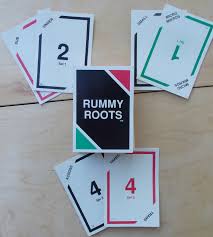Rummy Roots, is a beloved card game enjoyed by millions worldwide, known for its blend of strategy, skill, and a touch of luck. But where did this game originate, and how did it evolve into the various forms we see today? This article explores the roots of Rummy, tracing its historical origins, cultural influences, and the development of its many popular variants.
Historical Origins of Rummy
The exact origins of Rummy are difficult to pinpoint, as the game has evolved and adapted through various cultures and time periods. However, most historians agree that Rummy’s roots can be traced back to the 19th century, with connections to several earlier card games.
- Chinese Influence: Conquian:
- One of the earliest games believed to have influenced Rummy is Conquian, a card game that originated in Mexico in the mid-19th century but is thought to have Chinese roots. Conquian involves drawing and discarding cards to form specific combinations, a core concept shared with modern Rummy.
- European Ancestry: The Game of Whist:
- In Europe, the card game Whist, popular in the 18th and 19th centuries, is another precursor to Rummy. Whist is a trick-taking game that emphasizes strategic play, and while it differs from Rummy in mechanics, the focus on skill and strategy in both games suggests a shared lineage.
- American Adaptations: Poker Influence:
- In the United States, the 19th century saw the rise of poker, which also influenced the development of Rummy. The draw-and-discard mechanism in poker games like “draw poker” and “stud poker” is similar to Rummy’s gameplay, highlighting an exchange of gaming traditions.
The Evolution of Rummy
As Rummy spread across different regions, it evolved into various forms, each influenced by local customs and preferences. Here are some key milestones in the game’s evolution:
- Introduction to the United States:
- Rummy gained popularity in the United States in the early 20th century. The game evolved from its earlier forms into what is now known as “Basic Rummy” or “Straight Rummy.” This version, where players draw and discard cards to form sets and sequences, became a foundation for many other variants.
- The Rise of Gin Rummy:
- In the 1930s, Gin Rummy was developed by Elwood T. Baker and his son, C. Graham Baker, in New York. This version, which is played with 10 cards and emphasizes reducing “deadwood” or unmatched cards, quickly became a popular pastime, especially during the Great Depression and World War II eras.
- Indian Rummy:
- In India, a unique variant known as Indian Rummy or 13 Card Rummy developed, combining elements of traditional Rummy with local gaming customs. This version often includes two decks and Jokers, and players aim to form valid sets and sequences with 13 cards.
- Mahjong and Other Eastern Variants:
- In Asia, particularly China and Japan, Rummy-like games such as Mahjong have long been popular. These games, while distinct in their rules and tiles used instead of cards, share the draw-and-discard mechanism and the objective of forming sets.
- Modern Variations and Online Rummy:
- Today, Rummy exists in numerous variants, including Kalooki, Canasta, and Rummy 500. The advent of the internet has further diversified the game, with online platforms offering various versions, tournaments, and unique house rules.
Cultural Impact and Popularity
Rummy’s cultural impact is vast, with the game being enjoyed across continents and generations. Its appeal lies in its simple rules, strategic depth, and social nature, making it a favorite for family gatherings and casual play.
- Global Popularity:
- Rummy’s adaptability has led to its global popularity. In North America, Gin Rummy and Rummy 500 are well-known, while Indian Rummy is a staple in South Asia. Latin America favors Conquian and its derivatives, and Mahjong’s tile-based version is popular in East Asia.
- Cultural Traditions:
- In many cultures, Rummy is more than just a game; it is a tradition passed down through generations. It is often associated with festivals, family gatherings, and social occasions, making it an integral part of cultural identity in many regions.
- Online Revolution:
- The rise of digital platforms has brought Rummy into the digital age, allowing players to enjoy the game online. This has not only increased accessibility but also introduced Rummy to a new generation of players worldwide.
Conclusion
The roots of Rummy are deep and diverse, tracing back to various card games and cultural traditions around the world. Its evolution has been shaped by local customs, player preferences, and historical contexts, resulting in a rich tapestry of variants that cater to different tastes and styles. Whether played with cards or tiles, in person or online, Rummy continues to be a beloved game that brings people together through its blend of strategy, skill, and fun.




